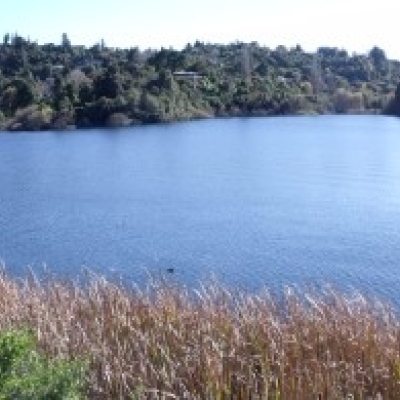
29 February 2016
The current proposed Lake Rotorua Nutrient Management rules have been formally notified by the Bay of Plenty Regional Council today, marking the beginning of an official submission period.
The Lake Rotorua Nutrient Management rules are a proposed plan change to the Regional Water and Land Plan, and are one of four components of the integrated framework delivered by the Rotorua Te Arawa Lakes Programme (RTALP) aimed at improving the water quality in Lake Rotorua.
The proposed rules aim to reduce nitrogen loss on land that then enters the lake. They have been developed with input from Rotorua Lakes Council and Te Arawa Lakes Trust (RTALP partners), stakeholders, technical and science experts, and the community through feedback received at public meetings, hui, information sessions.
Bay of Plenty Regional Council Chair Doug Leeder says the submission period provides the opportunity for anyone to submit formal feedback on the proposed rules. Submissions close on Friday 15th April.
“The proposed rules have been under informal consultation for the past two and a half years, signalling a greater focus on engagement and collaboration between the community and regional council.
The current proposed rules have been put together from almost 100 research and information reports from staff and independent subject matter experts, community representation groups and engagement, but are by no means final – there is still time for the community to continue to have their say.”
Other components of the integrated framework include engineering initiatives like the Zeolite filter trial at Tikitere, sewerage reticulation, voluntary land use changes and voluntary conversion of gorse. Deed funding of $72 million has been allocated to protect water quality of the four priority lakes under the RTALP, and this includes $5.5m to support landowners in the Rotorua Catchment through a Land Use Advice and Support service ($2.2m) and a fund for investigating alternative land uses ($3.3m).
“Significant work has been undertaken in recent years and great progress has been made, all with the focus on striking a balance between the environment, the economy and the needs and desires of our local communities. These aspects are inextricably linked and the approach developed aims to achieve sustainable outcomes for everyone involved, including landowners and the wider economy.” says Doug Leeder.
For more information visit www.boprc.govt.nz
The Lake Rotorua Nutrient Management – proposed Plan Change 10 to the Bay of Plenty Regional Water and Land Plan will affect rural landowners in the Lake Rotorua Groundwater Boundary.
For more information on the development of the rules and what it will mean for landowners visit rotorualakes.co.nz
A dedicated landowner’s advice line has been set up. Landowners can phone 07 921 3377 to find out what their Nitrogen Discharge Allowance is, what their current state is and access funding to develop a Nitrogen Discharge Allowance with independent Land Use Advisors.
The proposed plan change will mean that:
Properties/farming enterprises 5 hectares or less in total area will be able to continue to use their land without requiring a resource consent so long as the land is not used for commercial cropping, commercial horticulture or dairy farming.
Properties/farming enterprises greater than 5 hectares and up to 10 hectares OR from 5 to 10 hectares of effective area will not require a resource consent so long as they comply with a stocking rate table at any time during the year and the land is not used for commercial cropping, commercial horticulture or dairy farming.
Properties/farming enterprises between 10 and 40 hectares of effective area* will not be able to increase their nitrogen loss from what they currently do and will need to provide information to Bay of Plenty Regional Council annually until 30 June 2022.
From 1 July 2022, landowners will need a resource consent. They will be given a Nitrogen Discharge Allowance (NDA) that they must meet and a requirement of the consent will be to develop a Nitrogen Management Plan to show how they will meet their NDA.
*the part of their property/farming enterprise that is actively grazed or cultivated.
Properties/farming enterprises greater than 40 hectares of effective area* will require a resource consent from 1 July 2017. They will be given a Nitrogen Discharge Allowance (NDA) that they must meet and a requirement of the consent will be to develop a Nitrogen Management Plan to show how they will meet their NDA.
*the part of their property/farming enterprise that is actively grazed or cultivated.
Properties/farming enterprises used for forestry, bush and low intensity farming activities* will not require a resource consent but will need to provide information to Bay of Plenty Regional Council annually.
*Properties/farming enterprises where nitrogen loss is 68% of the nitrogen loss generated by the drystock reference file. Under OVERSEER 6.2.0 that is 18kg N/ha/yr.
Properties/farming enterprises that have commercial cropping, commercial horticulture or cannot comply with the stocking rate table will not be able to increase their nitrogen loss from what they currently do and will need to provide information to Bay of Plenty Regional Council annually until 30 June 2022.
From 1 July 2022, landowners will need a resource consent. They will be given a Nitrogen Discharge Allowance (NDA)